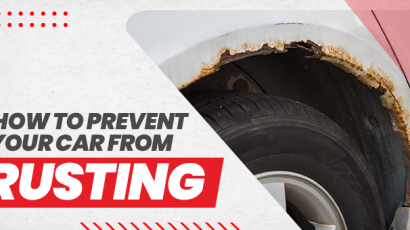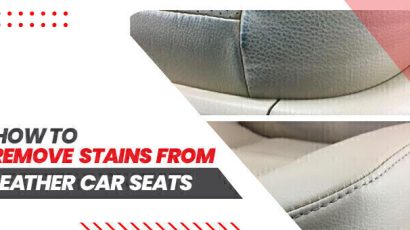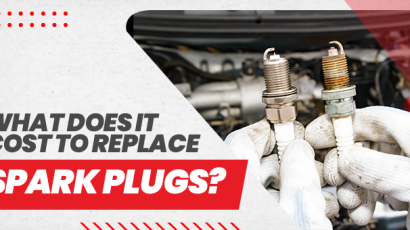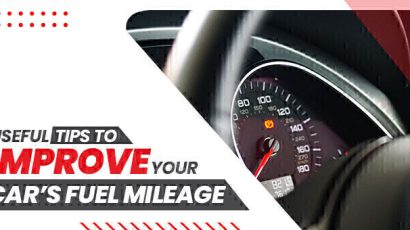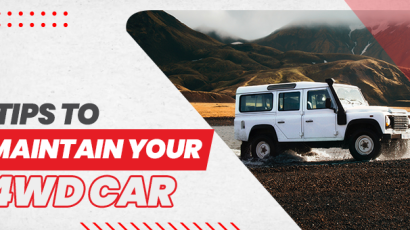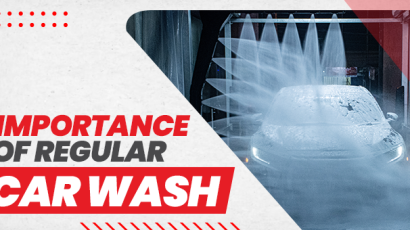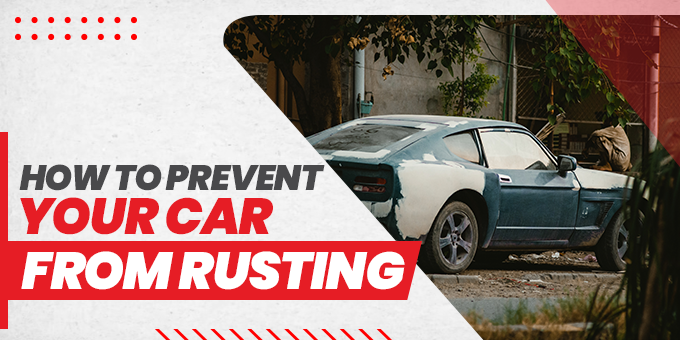
For automobile owners, rust may be a nightmare. The most prevalent source of rust is a buildup of moisture caused by prolonged exposure to rain and snow. Rust may develop on used cars due to various factors, including age or improper storage. Many dangerous chemicals in the air and adverse weather conditions might damage your automobile if you don’t have a garage.
You might have this question in mind on how to stop a car from rusting, so let us talk about it in detail. You can prevent rust if you’re willing to put in the time and effort to do so. Even in the summer, cars may develop rust on car paint.
The Importance of Preventing Rust on Your Undercarriage
Rustproofing the undercarriage of your second-hand car is essential for two key reasons. To begin with, you will save money over the long term. You should expect to pay between $30 and $2,000 for rust repairs, depending on the severity of the damage. Rust damage may be so severe that it may be necessary to replace the whole afflicted portion of a vehicle. If your automobile has even a little amount of rust on it, it will devalue rapidly.
Second, and maybe more crucially, rustproofing protects the structural integrity of the car, which can be compromised by rust. The prevention of leaks and other mechanical problems that may be expensive and harmful is another benefit of rustproofing.
Rust protection is essential in certain countries, where the winters are extremely harsh. They use ice-melting road salt to keep their roads safe in the winter months. This comes with bad news too. When water and oxygen interact with salt, rust production is accelerated. It collects beneath your car over time, particularly in the winter, and begins to cause problems.
1. Coat with a ceramic finish
It used to be that waxing your automobile was the greatest method to protect it from the elements, but today most auto shops offer ceramic coating as a powerful and cost-effective alternative to waxing. Vehicles may be painted using this liquid polymer. Even in the most extreme situations, the ceramic coating will not damage the paint.
Ceramic coating, unlike wax, does not need to be reapplied for up to 3 years on a vehicle. It might persist much longer in warmer areas.
2. Rust Prove the Undercarriage
Rust Proofing the undercarriage of an SUV can be done in a variety of ways, from doing it yourself to having it done by a mechanic. The first thing you can do is have a rust-proofing spray applied to it. Since the oil-based liquid can get into all of the crevices and cracks, most people think this is the best method to go about it. Alternatively, a heavier sealant spray may be utilized, but make sure the undercarriage is well cleaned before doing so. If you do not remove it, you might end up with pebbles and caustic stuff trapped behind it if you do not remove it.
When it comes to coating brake and gasoline lines with rust-proofing chemicals, go big or go home. In these areas, rust is more likely to occur. Water, salt, and other harmful things cannot penetrate the rustproofing agent.
Rustproofing your undercarriage is something you can do at any time. You will get the greatest results if you can perform it before the vehicle leaves the dealership. In the beginning, the underside is cleaner than before.
It is also common to utilize electronic rust inhibitors to prevent rust from forming in automobiles. A small electric current is sent through the metal of the car as these systems function. A current interferes with this charge between metal and oxygen, keeping it from rusting.
3. Wash your vehicle
Rust may build up more quickly if your Sedan is covered in dirt. Regardless of the season, you should clean your automobile at least once a week, no matter how dirty it may be. This may be done by hand or by having your automobile washed.
4. Watch out for salt
Rust is exacerbated by salt, which is a major cause of rust. The metal of the car will rust more quickly if it is exposed to water. Because of the rock salt on the roadways, rusting is more likely in the winter. You should wash your automobile at least once a week during the winter.
5. Apply rust-prevention spray to metal surfaces
Treating rust as soon as you see it is the greatest method to prevent it from spreading. A trip to the mechanic or replacing a rusty item is not necessary if discovered in time. As soon as the paint starts to bubble, it’s an indication of corrosion, and you should start wondering how to remove rust.
First and foremost, make sure the area is clean and allow it to air dry. Use anti-rust spray after the region is dry. This is a viable option in the absence of frequent waxing or ceramic coating. The spray may protect your vehicle for up to a year after it is sprayed.
6. Drain plugs should be kept free of debris
Drain plugs should be inspected often while caring for your vehicle to avoid corrosion. In order to prevent water from accumulating, these plugs should be cleaned out regularly to remove any debris and coated with rust remover. Check the drain plugs after you wash your automobile and clean them if necessary. These may be found beneath the doors of your vehicle, as well as around the trunk and hood’s borders.
7. Keep the inside of your automobile dry
There is a considerable chance that water from the inside of your automobile will make its way to the outside. To avoid this, use a towel to clean any moist surfaces in your automobile thoroughly. If anything spills inside your car, wipe it up as quickly as you can. A spill that is left neglected will be harder to remove. Once the bulk of the water has evaporated, you should let the automobile air dry.
8. Use Wd-40 Multi-Use To Coat Rust Probe Areas
The coating is the last step in the process of cleaning and waxing. As an additional layer of protection, utilize. When it comes to protecting your automobile, the lubricant is fast-acting and will keep the components dry in all weather situations. It reaches deeper into the regions and prevents additional oxidation. Once the automobile has been washed, coat the rust-prone spots. Keep WD-40 away from tires and read the directions carefully.
Use WD-40 Multi-Use Flexible Straw to clean and lubricate minor components like the nuts and screws in the wheel plate and the engine connection. The bending straw allows you to get into those hard-to-reach locations and apply a thick and accurate application. Remove any drips as soon as you see them.
9. Always Be Prepared For Changing Weather Conditions
Rust may develop in conditions other than high humidity. In the event of heavy snowfall, we will apply salt to melt the ice on your driveway and sidewalk. Salt is abundant in the air when the weather warms up. Surfaces are progressively eaten away by this salt, which adheres to the undercarriage. You should be aware of the likelihood of puddle formation while washing your automobile because of this. If you do not have a garage, you must park your vehicle in an area that is raised and undercover when it snows.






